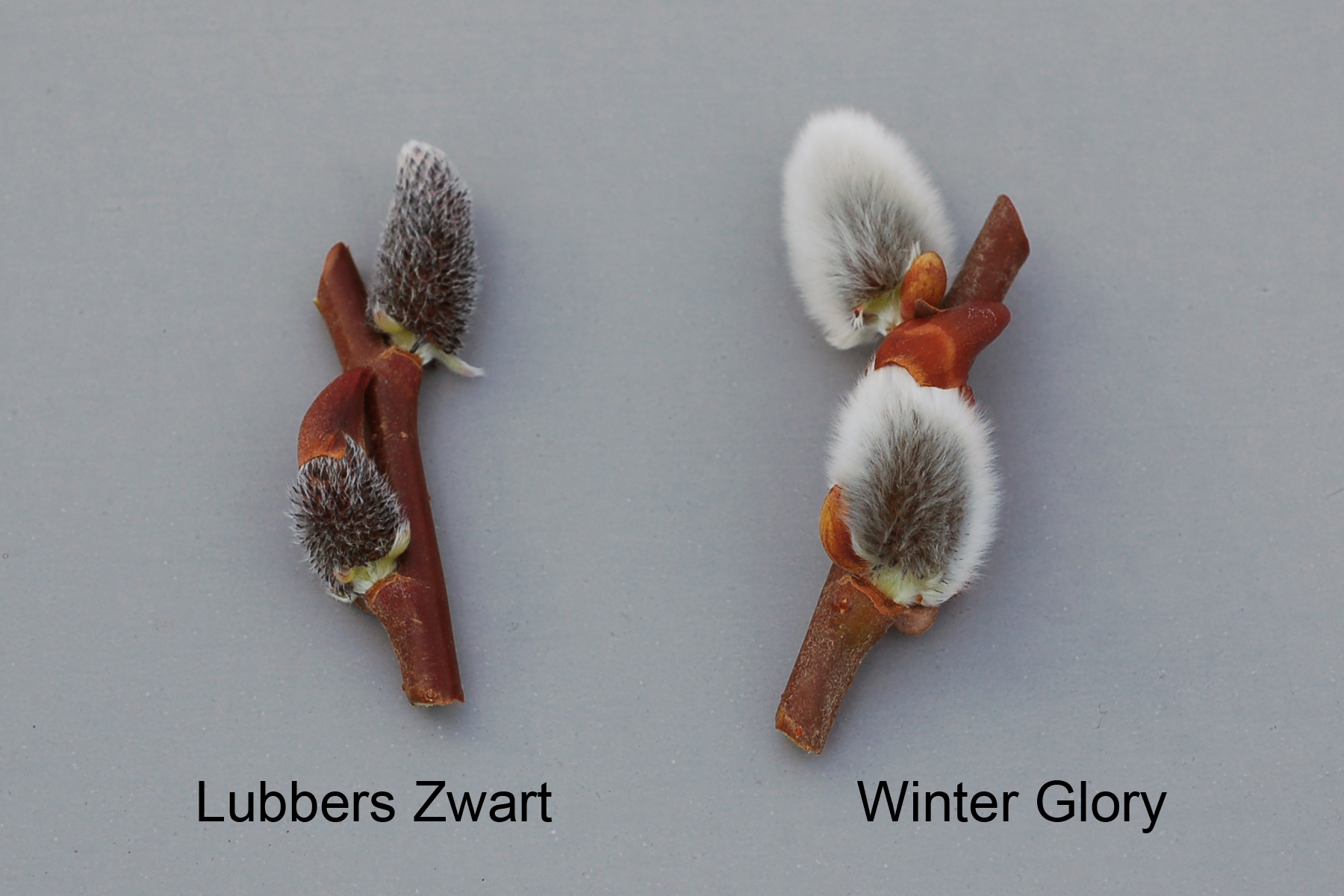Lubbers Zwart
| Denomination: | 'Lubbers Zwart' |
|---|---|
| Trade name: | Black Cat |
| Botanical Name: | Salix chaenomeloides |
| Applicant/Holder: |
Spring Meadow Nursery, Inc. 12601 120th Avenue Grand Haven, Michigan 49417 United States of America |
| Breeder: |
Howard Lubbers, Howard, Lubbers, Holland, United States of America |
| Agent in Canada: |
BioFlora Inc. 38723 Fingal Line R.R. #1 St. Thomas, Ontario N5P 3S5 Canada Tel: 519-317-7511 |
| Application Date: | 2014-07-25 |
| Application Number: | 14-8406 |
| Grant of Rights Date: | 2020-02-20 |
| Certificate Number: | 6141 |
| Date rights surrendered: | 2023-02-20 |
Variety Description
Variety used for comparison: 'Winter Glory'
Summary: The natural plant height of 'Lubbers Zwart' is shorter than the natural plant height of 'Winter Glory'. The branch of 'Lubbers Zwart' is shorter than the branch of 'Winter Glory'. The silky hairs on the catkin of 'Lubbers Zwart' are dense and medium length whereas the silky hairs of 'Winter Glory' are very dense and long.
Description:
PLANT: shrub type, upright to spreading growth habit, medium density branching, vigorous growth rate
STEM: light green, medium thickness, medium to dense pubescence, rounded in cross-section
BUD: medium sized, orange-brown, ovoid shape, pointed apex, absent or very sparse pubescence
SCALE: large, ovoid shape, medium brown (RHS 166A)
PETIOLE: medium to strong intensity of anthocyanin colouration, very dense pubescence
LEAF: simple type, alternate arrangement along stem
YOUNG LEAF BLADE (UPPER SIDE): medium brown (RHS 176A-C) developing to brown green (RHS 146A-B) as leaf expands
LEAF BLADE: lanceolate and oblong shape, acuminate apex, rounded base, serrulate and crenate margin, no lobing, no variegation, weak to medium waviness of margin
LEAF BLADE (UPPER SIDE): absent or very sparse pubescence, dense pubescence along midrib, brown green (RHS 146B) at mid-season
LEAF BLADE (LOWER SIDE): no anthocyanin colouration on veins
FLOWER: inflorescence type
INFLORESCENCE: catkin type
CATKIN: grey (RHS 202C) when newly opened, white (RHS NN155C) and grey (RHS 202D) when fully opened, black (close to RHS 202A) carpels
SILKY HAIRS: dense, medium length
Origin & Breeding History: 'Lubbers Zwart' was discovered and developed by the breeder, Howard L. Lubbers, in Holland, Michigan, USA. It was discovered in 2008 as a branch mutation of a wild selection of Salix chaenomeloides in a cut flower nursery in Allegan County, Michigan. 'Lubbers Zwart' was selected during that same year for its tall, strong stems and dark catkins. It was first asexually propagated by hardwood cuttings in April 2008 in Grand Haven, Michigan, USA.
Tests & Trials: The comparative trial of 'Lubbers Zwart' was conducted as an outdoor irrigated container trial during the summer of 2018 at BioFlora Inc. in St. Thomas, Ontario. The trial included a total of 12 shrubs each of the candidate and reference variety. All shrubs were grown from rooted cuttings and transplanted into containers on July 27, 2016. Plants were overwintered in an above-zero polyhouse. The trial was arranged outdoors in rows with approximately 100 cm spacing between plants. Observations and measurements were taken from 10 plants, or parts of 10 plants, of each variety on March 12, 2018 for flower characteristics and on July 2, 2018 for plant and leaf measurements. All colour determinations were made using the 2007 Royal Horticultural Society (RHS) Colour Chart.
Comparison tables for 'Lubbers Zwart' with reference variety 'Winter Glory'
Natural plant height (cm)
| 'Lubbers Zwart' | 'Winter Glory' | |
|---|---|---|
| mean | 46.5 | 84.6 |
| std. deviation | 4.59 | 11.11 |
Branch length (cm)
| 'Lubbers Zwart' | 'Winter Glory' | |
|---|---|---|
| mean | 67.7 | 95.0 |
| std. deviation | 7.80 | 7.07 |
Click on image for larger view

Pussy Willow: 'Lubbers Zwart' (left) with reference variety 'Winter Glory' (right)
Click on image for larger view

Pussy Willow: 'Lubbers Zwart' (left) with reference variety 'Winter Glory' (right)
Click on image for larger view

Pussy Willow: 'Lubbers Zwart' (left) with reference variety 'Winter Glory' (right)
- Date modified: